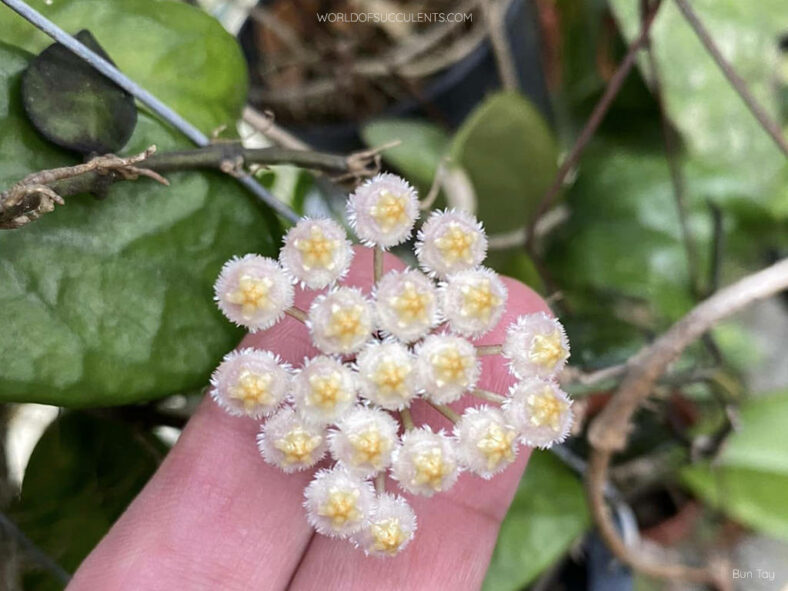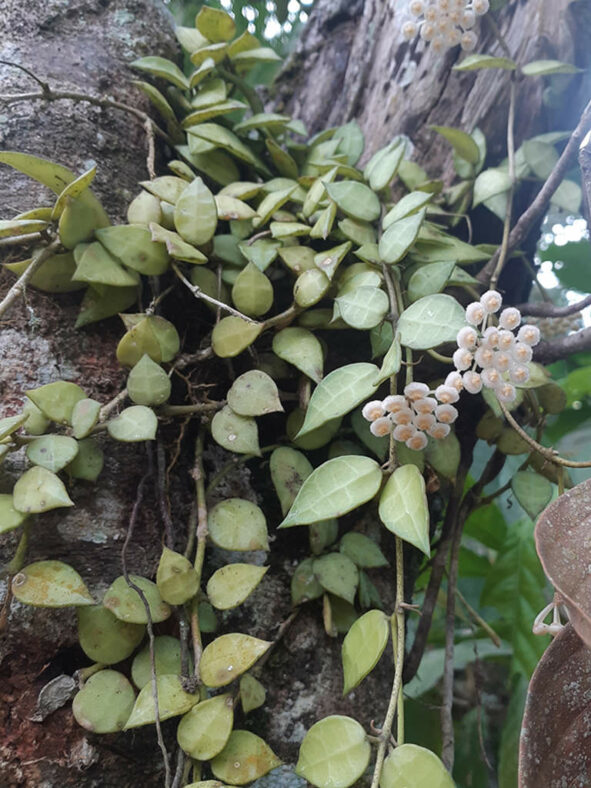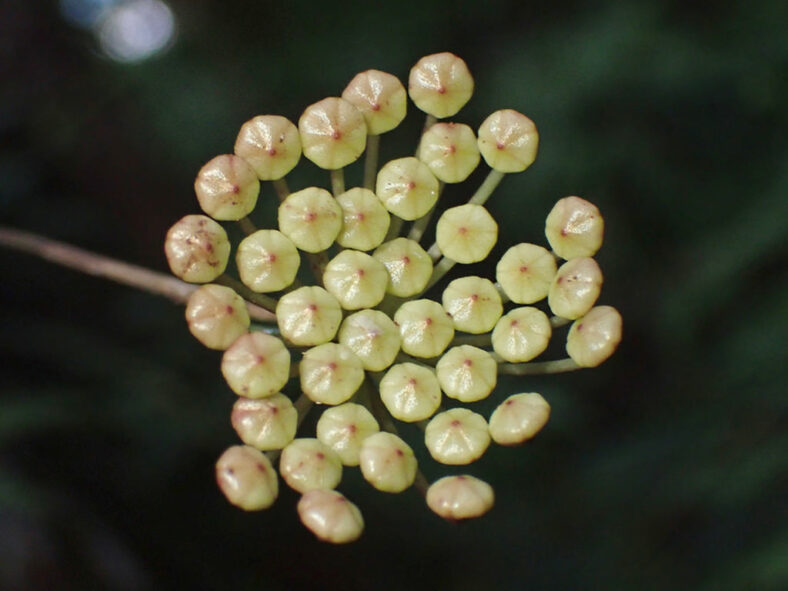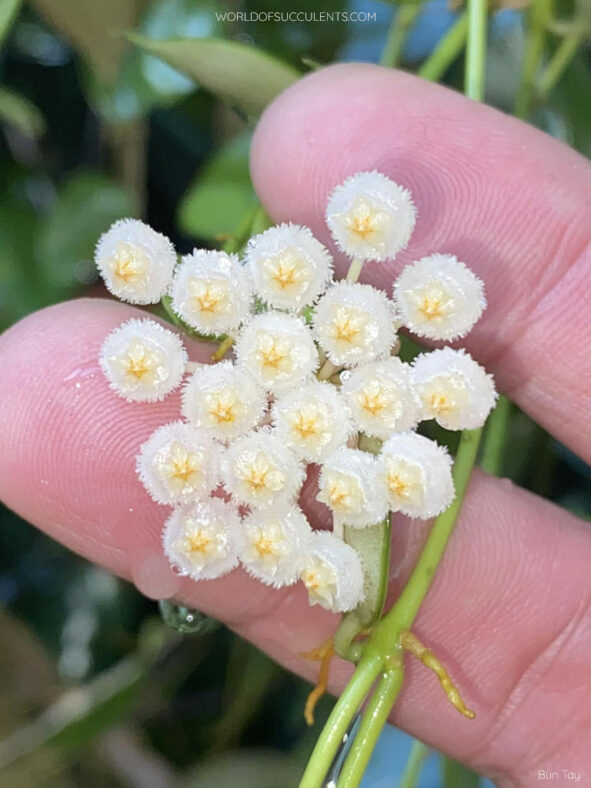Hoya lacunosa is a frequent bloomer with flowers that have a wonderful, perfume-like fragrance. It can transform any room into a sweet-smelling paradise.
Scientific Name
Hoya lacunosa Blume
Synonym(s)
Otostemma lacunosum
Scientific Classification
Family: Apocynaceae
Subfamily: Asclepiadoideae
Tribe: Marsdenieae
Genus: Hoya
Etymology
The specific epithet "lacunosa" (pronounced "lak-uh-NO-suh") means "full of holes, cavities, gaps, etc." and refers to the slightly depressed sections between the veins on the leaves.
Origin
The native range of Hoya lacunosa extends from India, China, Thailand, Malaysia, and Singapore to Indonesia (Borneo, Java, and Sumatra). It grows as an epiphyte in lowland and hill forests, often on trees along rivers.
Description
Hoya lacunosa is a climbing plant with slender stems that bear dark green, shiny leaves. The stems can grow up to 5 feet (1.5 m) long. The leaves are either ovoid or lance-shaped, featuring a pointed tip, 2 to 4 pairs of slightly prominent lateral veins, and a somewhat depressed midrib and sections between the veins. They can measure up to 2 inches (5 cm) long and 1.2 inches (3 cm) wide. Each leaf is attached to the stem by a petiole measuring up to 0.5 inches (1.2 cm) long.
Flowering can occur at any time of the year. The flowers appear in hanging umbels on sturdy stalks that can grow up to 2.8 inches (7 cm) long, with each umbel bearing up to 30 flowers. The flowers are intensely fragrant and typically last about 5 days. They can reach a diameter of up to 0.3 inches (0.7 cm) and have a white corolla with violet dots and a yellowish-white corona with a dark yellow center. The corolla is densely covered with long, thick hairs. The fruits are long, spindle-shaped follicles that can grow up to 2.8 inches (7 cm) long and 0.2 inches (0.5 cm) thick.

How to Grow and Care for Hoya lacunosa
Light: Keeping this plant indoors in bright, indirect sunlight is best. Although it can tolerate lower light levels, it may become weak and leggy if the light is too low, producing fewer leaves and flowers.
Soil: Well-draining soil that provides excellent aeration and does not hold too much water is most important for growing a healthy plant.
Temperature: Hoya lacunosa thrives in hot and humid climates, so keep it away from drafty windows and doorways during the colder months. It grows best in USDA Plant Hardiness Zones 11a to 11b, with average minimum winter temperatures ranging from 40 to 50 °F (4.4 to 10 °C).
Watering: As this plant is sensitive to overwatering, soak the soil thoroughly during the spring and summer, but allow it to dry out before watering again. Otherwise, you will increase the risk of root rot, and your plant will not be happy. It is relatively dormant during the fall and winter and needs only moderate watering.
Fertilizing: While Hoya lacunosa is not a particularly heavy feeder, it can benefit from high-potassium fertilizer diluted to half strength every two weeks during the growing season.
Repotting: As an epiphyte, this plant has shallow root systems and does need a deep container. It also does not require frequent repotting. It prefers to be slightly rootbound, so repot it in spring only if it outgrows its container.
Propagation: Although layering is the easiest method, using stem cuttings is the most popular propagation method for Hoya lacunosa. Using leaf cuttings can be more challenging, while starting the plant from seeds is the simplest but most time-consuming method. For best results, take cuttings only when the plant is actively growing and sow the seeds in spring and summer.
Learn more at How to Grow and Care for Hoya.
Toxicity of Hoya lacunosa
Hoya lacunosa is considered non-toxic, so it is safe around kids and pets.
Links
- Back to genus Hoya
- Succupedia: Browse succulents by Scientific Name, Common Name, Genus, Family, USDA Hardiness Zone, Origin, or cacti by Genus
Photo Gallery
Click on a photo to see a larger version.


